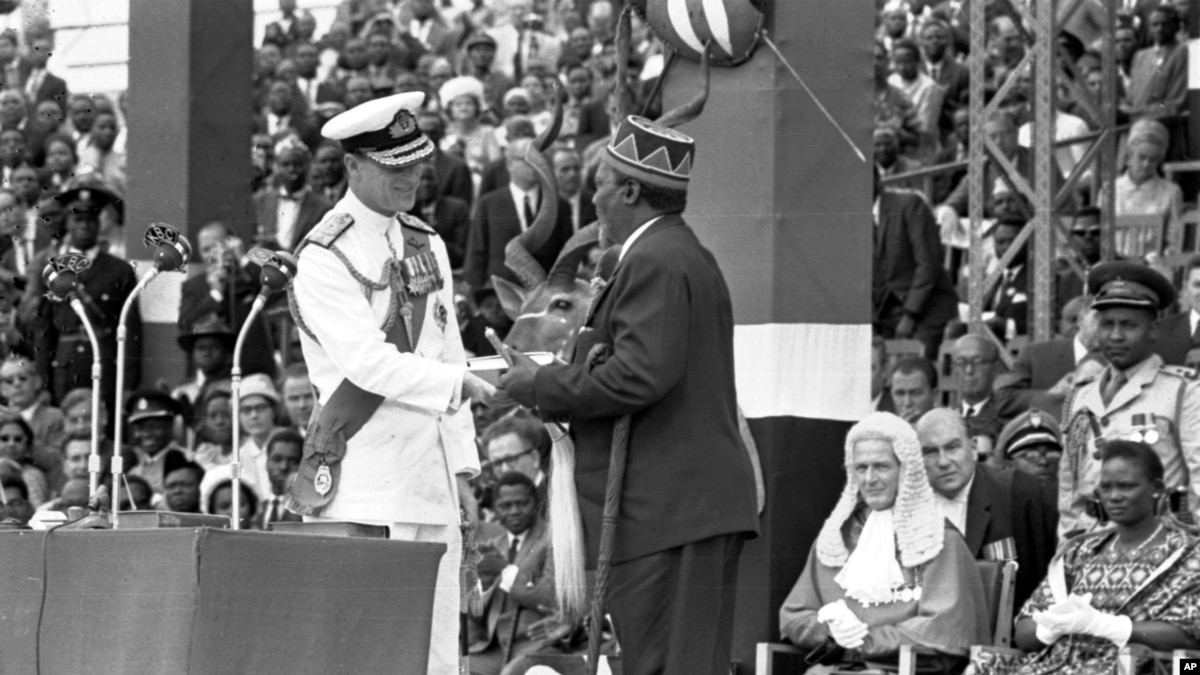A Historical Exhibition
1. Ruring’u Stadium, Nyeri – Early 1963
Supporters of the Kenya African National Union (KANU) gather after a symbolic gesture of surrender at the end of the Mau Mau Emergency. The ritual attire and dramatic hair crests reflect attempts at communal reconciliation after years of insurgency and detention. The event marked a transition from armed resistance to political negotiation, a theme explored in the history of the Mau Mau Uprising.





2. Voters in Line During the May 1963 General Election
Photo shows a long queue of Kenyans at a voting station. These were the final colonial-era elections and determined who would lead the country into independence. KANU would win decisively, forming the internal self-government established ahead of full independence in December 1963.




3. Nairobi on the Eve of Independence, 1963
These photographs capture central Nairobi in the final months before independence. Government Road and the surrounding districts were the core of the colonial administrative and commercial centre, marked by mixed pedestrian traffic, prominent storefronts, and early high-rise buildings. Views from the New Stanley Hotel reveal steady vehicular movement and a busy urban economy preparing for political transition. Another street-level scene, showing the Air France building and neighbouring shops, illustrates a city that was modernising rapidly while still shaped by racial zoning inherited from colonial rule. For broader context on the city’s development, see the history of Nairobi.



5. Kenyatta, Odinga, and Mboya in London – 25 September 1963
Prime Minister Jomo Kenyatta, Minister for Home Affairs Oginga Odinga, and Minister of Justice Tom Mboya arriving for independence negotiations in London. Their joint appearance symbolised the political unity required to finalize the terms of independence. The three leaders would later represent diverging ideological positions in the early republic, explored further in the profiles of Jaramogi Oginga Odinga and Tom Mboya.

6. Independence Celebrations – 12 December 1963
A series of photographs show the lowering of the Union Jack and the raising of the Kenyan flag during the ceremony at the newly renamed Uhuru Stadium. Military parades, official speeches, and large public gatherings marked the end of 68 years of British colonial rule. Kenyatta’s presence as Prime Minister signified the first day of internal and external sovereignty for the nation.








Symbols of the New Nation, 1963
These images document how independence was commemorated and communicated across Kenya. The Daily Nation front page from 12 December 1963 announced the moment the Union Jack was lowered and the new national flag raised at midnight, marking the birth of the Republic. A series of commemorative postage stamps issued the same year celebrated wildlife, national leaders, cultural heritage, and the new flag. These stamps served both as postal currency and as early instruments of national identity. Another stamp features the newly established National Assembly building, symbolising the institutional foundations of the independent state. Together, these materials capture how independence was recorded, celebrated, and projected to the public in the first hours and months of self-rule.





Surrender and Disarmament After Independence, 1963
These photographs record the final stages of the disarmament process that followed independence. Former Mau Mau fighters, still dressed in improvised military attire, participated in organised ceremonies to surrender weapons to the new government. The images show a mix of homemade rifles, traditional regalia, and government officials overseeing the handover. Although the Emergency officially ended before independence, these events highlight the ongoing effort to stabilise the country and reintegrate former combatants into civilian life. For a broader background on the movement’s legacy, see the Mau Mau Uprising.



Conclusion
The photographs and artefacts from 1963 capture the final moments of colonial rule and the first expressions of national sovereignty. They show a country negotiating peace after the Emergency, preparing for its first self-governed elections, and marking independence with public ceremony, political unity, and symbolic representation. From disarmament rituals to urban life in Nairobi, from the London negotiations to the midnight flag-raising, these images document the transition from colony to republic with clarity and immediacy. Together, they form a visual archive of Kenya’s most significant political turning point and offer a reference point for understanding the early foundations of the independent state.
